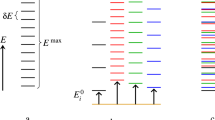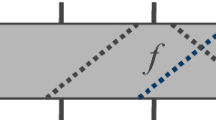
Overview
- A radically different approach to the challenges of quantum theory
- Authored by one of today's most creative theoretical physicists
- Pedagogically structured to first introduce concepts and main arguments, with technical details presented separately
Part of the book series: Fundamental Theories of Physics (FTPH, volume 185)
Buy print copy
Tax calculation will be finalised at checkout
About this book
This book presents the deterministic view of quantum mechanics developed by Nobel Laureate Gerard 't Hooft.
Dissatisfied with the uncomfortable gaps in the way conventional quantum mechanics meshes with the classical world, 't Hooft has revived the old hidden variable ideas, but now in a much more systematic way than usual. In this, quantum mechanics is viewed as a tool rather than a theory.
The author gives examples of models that are classical in essence, but can be analysed by the use of quantum techniques, and argues that even the Standard Model, together with gravitational interactions, might be viewed as a quantum mechanical approach to analysing a system that could be classical at its core. He shows how this approach, even though it is based on hidden variables, can be plausibly reconciled with Bell's theorem, and how the usual objections voiced against the idea of ‘superdeterminism' can be overcome, at least in principle.
This framework elegantly explains - and automatically cures - the problems of the wave function collapse and the measurement problem. Even the existence of an “arrow of time" can perhaps be explained in a more elegant way than usual. As well as reviewing the author’s earlier work in the field, the book also contains many new observations and calculations. It provides stimulating reading for all physicists working on the foundations of quantum theory.
Similar content being viewed by others
Keywords
Table of contents (23 chapters)
-
Front Matter
-
The Cellular Automaton Interpretation as a General Doctrine
-
Front Matter
-
Authors and Affiliations
About the author
Gerard 't Hooft is professor of theoretical physics at Utrecht University, The Netherlands. He was awarded the Nobel Prize in 1999, together with his thesis advisor Martinus Veltman, for “elucidating the quantum structure of electroweak interactions”. In his subsequent work he has made further major contributions in areas including black-hole physics, quantum gravity, the holographic principle, gauge theory, and the foundations of quantum mechanics.
Bibliographic Information
Book Title: The Cellular Automaton Interpretation of Quantum Mechanics
Authors: Gerard 't Hooft
Series Title: Fundamental Theories of Physics
DOI: https://doi.org/10.1007/978-3-319-41285-6
Publisher: Springer Cham
eBook Packages: Physics and Astronomy, Physics and Astronomy (R0)
Copyright Information: The Editor(s) (if applicable) and The Author(s) 2016
Hardcover ISBN: 978-3-319-41284-9Published: 13 September 2016
Softcover ISBN: 978-3-319-82314-0Published: 22 April 2018
eBook ISBN: 978-3-319-41285-6Published: 02 September 2016
Series ISSN: 0168-1222
Series E-ISSN: 2365-6425
Edition Number: 1
Number of Pages: XVIII, 298
Number of Illustrations: 2 b/w illustrations, 19 illustrations in colour
Topics: Quantum Physics, Mathematical Applications in the Physical Sciences, History and Philosophical Foundations of Physics



